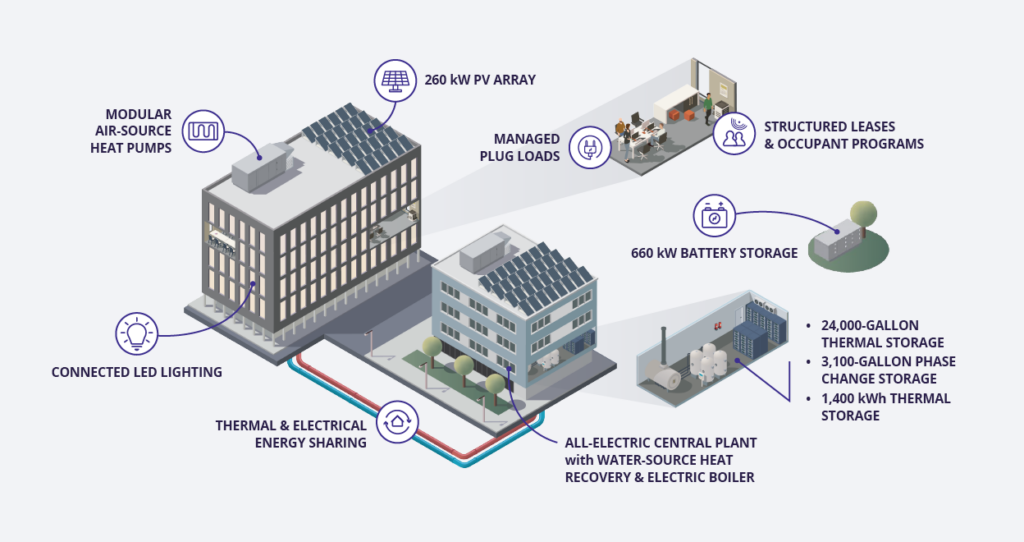Case Studies
The Future of Grid-Interactive Buildings In South Landing
September 06, 2024
THE CHALLENGE
Utilities and buildings are increasingly challenged with energy efficiency to achieve zero and carbon-free outcomes. However, the South Landing Eco-District exemplifies how innovative utility-building partnerships and advanced technologies can transform urban developments into sustainable and grid-interactive, setting a benchmark for future projects nationwide.
Avista, one of the largest utilities in Eastern Washington and Idaho, partnered with Edo and McKinstry. As a result, they transform land initially earmarked for a substation into a net-zero district energy campus. This innovative development encompasses two buildings totaling 200,000 square feet with the capacity to expand to six. Ultimately, it aims to achieve net-zero energy and enhance grid reliability and decarbonization.
THE SOLUTION
South Landing served as the foundation for Edo, which developed the technology to integrate with building systems and Distributed Energy Resources (DERs) and connect them to the grid. As a result, this unlocked energy efficient buildings and site flexibility. Edo’s technology enables optimal control of a complex central plant and DERs.
Likewise, Edo’s solution provides the utility with visibility into the real-time load potential across buildings, allowing them to monitor and make informed decisions about energy distribution and management. Moreover, Edo can curtail load as needed, reducing or shifting energy usage in specific buildings to manage demand, prevent overloads, and enhance grid stability.
By deploying a comprehensive data and control strategy across all building assets and connecting them to the grid, the solution maximizes asset value for building owners while ensuring occupant comfort and productivity. Edo eliminates the guesswork in building operations, seamlessly integrating building and utility systems for efficient energy management.
THE RESULTS
Energy Efficiency
Edo helped the building owner secure a $1.5 million energy efficiency rebate by achieving an Energy Use Intensity (EUI) of 26 kBtu/ft2, significantly lower than the weighted baseline of 93 kBtu/ft2 for similar buildings.
Demand Flexibility
Economically dispatches assets based on forecasted loads. Uses thermal and battery storage to reduce building load during peak events or supply power back to the grid. The building has significant solar generation. By self-consuming that solar generation, Edo can maximize the value of the PV for the building owner.
South Landing Features

Achievements
Vision and Origin
Creates new agreements and data-sharing practices between the utility, building owner, and tenants. Challenges the traditional energy value chain of energy suppliers and end-use consumers.
Performance and Outcomes
Demonstrates significant energy consumption reductions, improved EUI figures, utility incentives, and advanced demand flexibility capabilities.
Utility Perspective
Enhances the utility’s resource portfolio with Eco-Districts participating as balancing, reserve, and arbitrage resources.
Advanced Technologies
Utilizes advanced IoT sensors, data visualization, and machine learning for optimal energy management.
Tenant Engagement
Encourages energy-efficient behavior through restructured leases and active tenant education.